Wil reviews the 2019 Whyte S-120 C RS – a ludicrously fast trail bike with bonkers geometry
Brand new for 2019, the S-120 storms into the Whyte lineup as the hotly-anticipated replacement for the popular T-129.
Equipped with 29in wheels, 120mm of travel and progressive geometry, the S-120 is pitched as an all-round XC/trail bike. That sees it hunting down the same territory occupied by the likes of the Intense Sniper Trail, Giant Trance 29, Merida One-Twenty, and Pivot Trail 429.
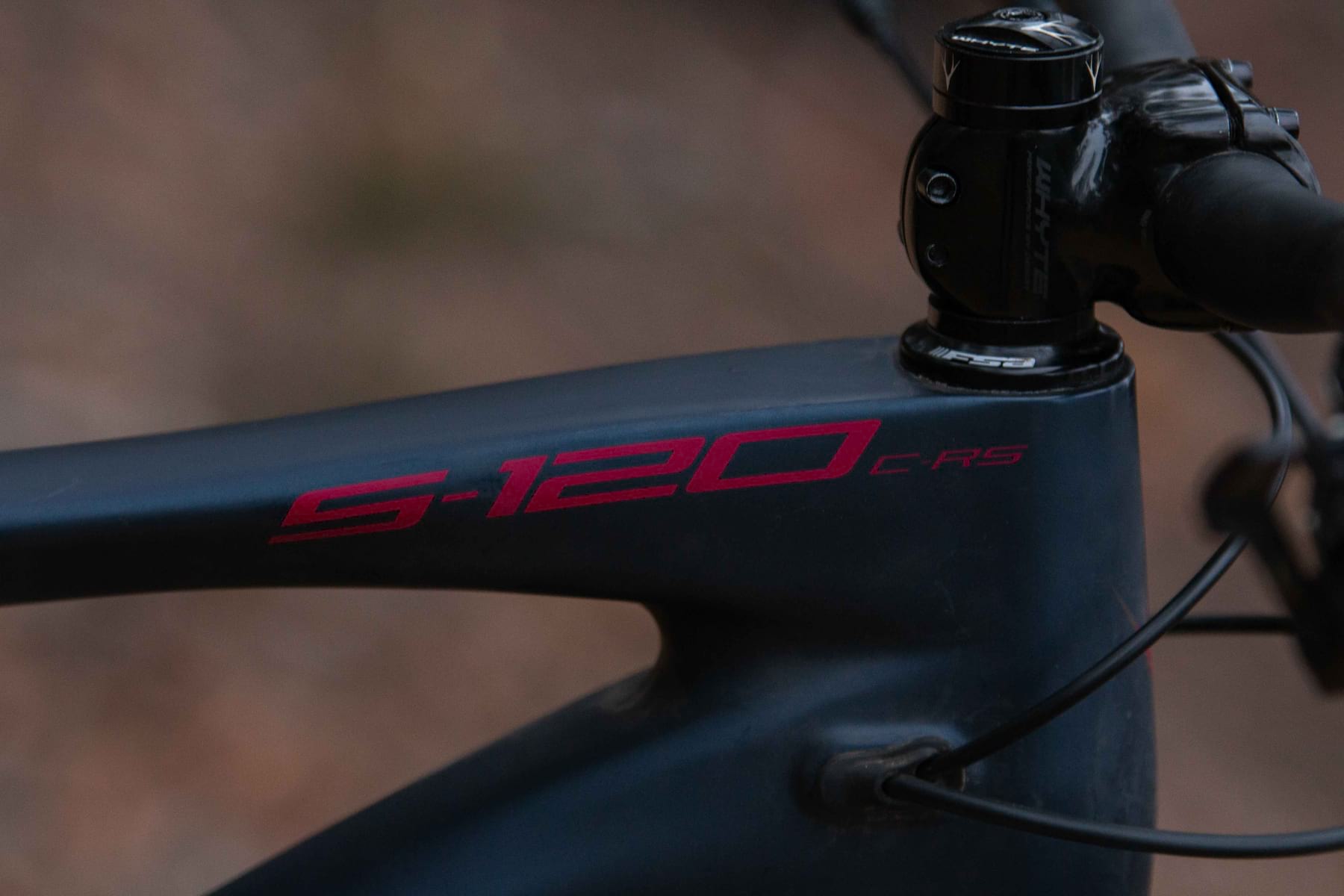
Amongst the broader Whyte full suspension lineup, you could consider the S-120 as a big wheel version T-130, or a shrunken down version of the S-150 – the UK brand’s long travel 29er enduro racer. However, while the S-150 is a 150mm travel 29er that will also accommodate 27.5+ wheels (the S stands for ‘Switch’), that’s not the case with the S-120. This bike is purely 29in wheels only, so I’m not entirely sure what the S stands for here.
There are three models in the S-120 C range, all of which are built around the same hybrid carbon/alloy frameset (C = Carbon). Four sizes are available from Small through to X-Large. The bike I’ve been testing for the past two months is the mid-spec model in the range; the S-120 C RS.
The Whyte S-120
Over the past decade, Whyte has earned itself a reputation for pushing the envelope when it comes to mountain bike geometry. Taking over where the last T-129 left off, the forward-thinking geometry theme doesn’t just carry over into the latest S-120. Here, it’s been cranked up to 11.
With nearly 1.2 metres spanning the front and rear axles on our Medium test bike, this bike is long. A lot of that wheelbase is owed to the front wheel sticking so far out in front. That’s a result of the uber-slack 65.5° head angle and a substantial 456mm reach – two numbers that are basically identical to the bigger travel S-150 enduro bike.
Also like the S-150, the S-120 has been paired to a reduced-offset fork.
While it may seem like one would need to assume a planking position to fit onto the S-120, Whyte has shortened the effective cockpit length by spec’ing a tiddy little 40mm stem, along with 780mm wide bars. The steep-ish 75° seat tube angle also helps in reining in the effective cockpit length.
“These are not really short travel XC bike numbers, mainly because we didn’t want the geometry and suspension to be the limiting factor of the S-120 for the rider”, explains Ian Alexander, the Chief Designer at Whyte Bikes, when I ask him about the motivation behind the S-120’s radical geometry package. “We think riders on an S-120 will ultimately run out of tyre/grip or perhaps even skill/talent first”.
Eyeing off the optimistic Maxxis tyre combo, I’m inclined to agree.
Backing up the progressive geometry is a stout chassis, with a muscular monocoque carbon fibre mainframe paired to a welded alloy back end. Interestingly, the frame is actually shared with the 27.5in-wheeled T-130 C. The shocks use the same eye-to-eye length, but a shorter stroke (50mm vs 55mm) brings the rear travel down to 120mm.
Though Whyte states that strength and stiffness has been the main priority for the S-120, the 2780g claimed frame weight (Medium w/shock) is respectable.
The familiar Quad Link 4 suspension design comprises of a four-bar linkage, with a forged alloy yoke that captures and drives the shock stanchion. The main pivot features locking collet hardware and spaces the bearings wide, forming a solid bracing point for the chunky, symmetrical chainstays.
More beef is found in the clevis yokes at either end of the seatstays, which are there to reduce pivot flex. The whole back end is rolling on large diameter sealed cartridge bearings that Whyte guarantees for life for the original owner.
Alloy pivot caps provide further weather shielding.
There’s also a tidy hidden seat clamp wedge with a rubber bung sealing the top, while ports for the internal cable routing are also guarded by rubber plugs. And of course there’s a good ol’ threaded BB.
Competitive types will appreciate the ISCG 05 chainguide tabs, and there’s also clearance to run up to a 36T chainring. Fitting an upper guide can be tricky though, due to the bulky main pivot and limited clearance with the chainring. Neither the K-Edge or MRP 1x guides I had on hand would fit the S-120. Whyte does sell its own upper guide though.
The uncommon flat mount brake setup looks tidy, and removes need for any threads in the frame itself (IS mounts used to do that didn’t they?), but I found it fiddly to align the calliper.
As for the outfit, there have been some clever spec choices in order to provide performance where it counts while keeping the price in check. There’s non-blingy Fox Performance Series suspension, a workhorse GX Eagle drivetrain, and plenty of Whyte’s own finishing kit. All solid stuff.
This has freed up some cash for Whyte’s product managers to spec Guide RS brakes, which compared to the cheaper Guide R & T brakes, get the power-boosting SwingLink driving the master cylinder. There’s also a fabulously slick BikeYoke Revive dropper post, which features 160mm of travel – something that’s possible thanks to the low stack height and short seat tube.
Setting Up
Whyte recommends 30% sag on the Fox Float DPS rear shock, which equates to 15mm at the O-ring.
The shock comes from the factory with a medium rebound and compression tune, as well as the smallest 0.2³ volume spacer inside the high volume LV air can. This ended up being fine for me, though you can fit bigger volume spacers (all the way up to Fox’ biggest 0.95³ red spacer) to increase progression for heavier and huckier riders.
To support my 70kg riding weight, I ran 160psi to begin with and set the rebound exactly halfway at 7/14 clicks.
As for the fork, I removed one of the stock two volume spacers and set pressure to 75psi, with rebound two clicks slower than halfway (9/22 clicks). Yo keep the fork from diving through the travel, I set the blue compression lever halfway.
The wheelset on the S-120 C RS is a custom number, which is built around Whyte’s own hubs with double sealed cartridge bearings. The colour-coded graphics on the Race Face AR-27 rims look snazzy, but it turns out they’re actually cheaper non-welded version of the ARC rims. This means they’re quite heavy, so along with straight-gauge spokes and brass nipples, the wheelset weighs a portly 2086g.
As always, I ditched the tubes immediately and setup the Maxxis tyres tubeless with 23psi in the front Forekaster and 27psi in the Crossmark II.
The Ride
Unsurprisingly, the Whyte S-120 feels big the first time you step aboard. With its long cockpit, widely spaced grips and vast wheelbase, it has a substantial footprint on the trail. As well as being very stable, it’s also quite easy to trackstand while waiting at the traffic lights.
What surprised me though is how not-awkward this bike is to corner on.
With the saddle slammed out of the way, there’s a tonne of standover clearance that allows you to lean the bike down hard. The 430mm chainstays are quite short, and that helps the S-120 pivot sharply through tight corners.
Along with the active rear suspension, it willingly drops into its travel when you need to pop up the front wheel. I’m honestly horrible at manualling, but even I could get onto the back wheel without a whole lot of effort.
While the S-120 is both long and slack, it isn’t silly low. Whyte has given the S-120 a relatively tall 340mm BB height, which lowers to 300mm once you’re on the bike. That’s 5mm higher than the Merida One-Twenty, and 10mm higher than the Canyon Neuron.
For linking up left-to-right corners, this higher BB helps you to flip the whole bike from side-to-side, with less resistance than if you were sitting deeper down between the hub axles. It also provides plenty of pedal clearance – clipping the cranks is a non-issue on this bike.
Combined with the wide bar and stubby stem, the S-120 ducks and weaves assertively – assuming you’ve already dropped the saddle. If you haven’t pre-empted the turn and have your saddle at full mast as you approach the entry though, it’s hard work trying to negotiate that long front centre all the way through. More often than not, these sorts of ‘Gotcha!‘ hairpins would have me understeering and having to tap the brakes to realign my trajectory.
The take-home message here is that this is a bike that requires you to really tip it hard though the corners, rather than trying to steer with the bars. And that handling style does take a few rides to adjust to.
One thing I didn’t need to adjust to though was the S-120’s tenacious descending ability. The substantial 120mm of trail (that’s 3mm more than the Trance 29, and 17mm more than Trek’s Fuel EX) keeps the front wheel steady at speed. Even as shit starts getting real wild, the S-120’s big footprint and stable steering invokes a stupendous amount of high-speed control to maintain your chosen line with poise and purpose.
Yes, you do need to ensure you keep your weight over the front wheel. Ride off the back, and you won’t create enough bite on the front tyre. As I found with the Trance 29, rolling the bars forward a touch does help to encourage more forward lean, and that drives your bodyweight into the front tyre’s contact patch.
Embrace the commitment though, and the S-120 will serenade you with its voracious velocity. There were countless times when I literally laughed out loud hysterically, on my own, in the bush, having narrowly avoided what I thought was going to be certain death. More often than not, I’d reach the bottom of a rough, steep and high-speed descent with my heart pounding, palms sweaty, and a slightly giddy expression on my face.
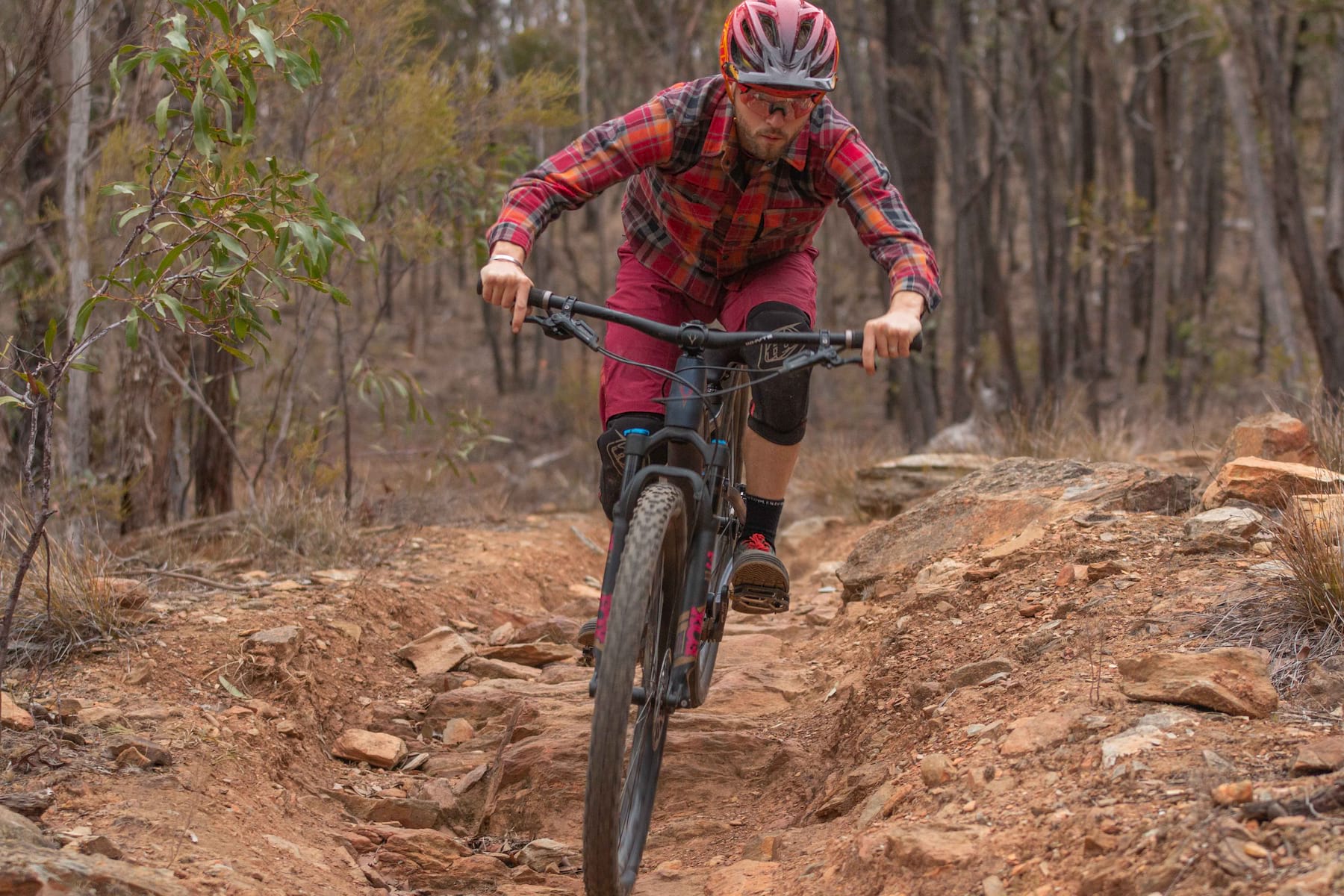
The whole experience is made all the more insane given the stock tyres, which really shouldn’t travel at the speeds the S-120 clocks up, over the loose rocky trails I took it. From the very first ride I felt like I was going to rip the rubber off the rims, such are the forces that the husky chassis inflicts on its sub-components. Even with the drifty Forekaster up front though, the S-120 retains an impressive level of control thanks to its balanced weight distribution and taut chassis.
Curious to explore the outer limits, I threw on a Maxxis Minion tyre combo with a DHR II on the front and a DHF on the rear. Although Whyte states an official maximum width of 2.3in, there is plenty of mud clearance through both the chainstays and bridge-less seatsays. An important consideration for all-weather riders.

With more significant rubber fitted, I took the S-120 on a shuttling date to suss out some particularly rock-infested enduro trails up Mt Tarrengower near Maldon. While many riders take full-blown DH bikes to these trails, my riding companions brought single-crown bikes; a new 160/150mm travel Trek Remedy and a 180/165mm Devinci Spartan.
Of course with only 120mm of travel and a sub-1.7kg Fox 34 Step-Cast fork, I wasn’t exactly going to keep up with the big rigs. But I wasn’t that far off.
Even with both wheels jiving about manically on the descents, the S-120 stayed stuck to the ground. The suspension quality is good – the fork in particular is well-damped, lively and responsive. The back end is also quite supple and active, and is a significant improvement over the previous generation T-130 I tested a little while back. I’d say it’s not unlike the suspension on the Canyon Neuron CF, which also uses a four-bar platform. In direct comparison, the S-120 isn’t quite as efficient under pedalling, but it is smoother and poppier overall.
Part of the S-120’s grounded feel no doubt comes down to the dynamic geometry, which holds true since the travel is so low. The more travel you have, the more the bike can pitch forwards or backwards. With only 120mm at each end though, there’s not a lot of pitching that can happen. So even if the suspension is overworked, the chassis and geometry can carry you through some seriously horrible terrain.
As testament to this, I really can’t recall one moment over the past two months where I felt like I was riding anything too steep on the S-120. It has rarely felt out of its depth.
Partway through testing I did decide to increase pressure in the rear shock, since I was hitting full travel more regularly than I wanted. Over the course of a few rides I upped the air pressure to 180psi, which lifted sag to 24%. This got rid of the bottoming issue, and while the suspension did firm up a little, it remained nicely active.
Even with the active four-bar suspension design though, pedal efficiency is good. I didn’t experience a whole lot of bob even while climbing, and left the shock in the open position anytime I was on rough singletrack. The middle position does increase the compression platform for zooming along fireroads, while the lockout is exactly that – a proper lockout. With both the fork and rear shock locked out, the S-120 is rigid.
Though it’s reasonably efficient, the S-120 is no spider monkey uphill. At 13.55kg, it’s quite heavy for a bike in this travel class. The robust sealing in the rear hub also creates quite a lot of drag, which I initially suspected as brake rub. The seals will bed in over time, but during the two months I had the S-120, the slow hub curbed the energy levels noticeably.
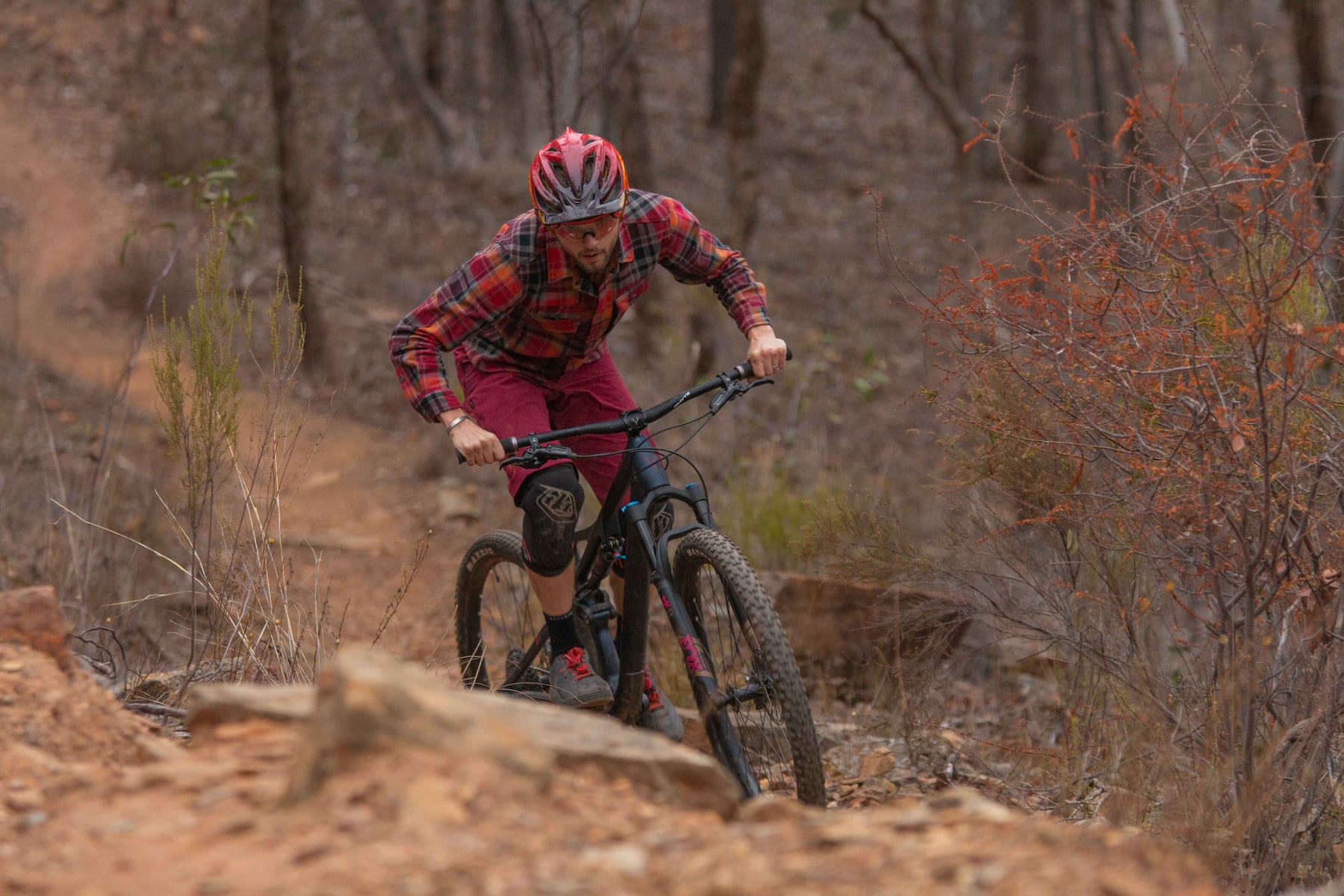
The steep-ish seat angle does provide a great climbing position, and there’s plenty of room in the cockpit to shift around as needed. Even though it’s slacker and longer than the Trance 29, it actually tackles steep switchbacks better. It doesn’t feel as jacked up at the front, and the short back end facilitates sharp swivel maneouvres more naturally.
With the grips so far away from your torso though, riding tight uphill singletrack on this bike had me reminiscing about by awkward teenager days. It’s a bit like learning the waltz whilst holding your partner at arms length.
Once you get used to the dynamic climbing posture though, it zig-zags uphill fine. But when things got really steep, I did find myself wishing for smaller gearing over the stock 34T chainring. Also, I have no doubts that with a lighter set of wheels, the S-120 would feel a lot more enthusiastic about earning the vert.
Durability Notes
Since the Whyte S-120 is just so bloody capable (I blame the bike), I found myself riding it pretty hard and fast given it only has 120mm of travel. The evidence of this is immediately apparent in the rear wheel, which copped a decent rim ding that also upset the tubeless tape.
Additionally, the spokes began to de-tension on me during the final photoshoot. Two of them came loose completely, and their respective nipples are now destined to a life of purgatory within the cold, hollow rim walls. I was surprised by the lack of thread-lock on the nipples, which explains why the wheel nearly imploded on me.
Personally though, if I was going to buy this bike, I’d seriously consider a stronger and higher quality wheelset along with more capable rubber.
Speaking of broken things, I did unfortunately bust off the fork’s rebound dial with my hand while bracing the fork to undo the axle. The GRIP damper’s rebound dial is quite flexy and flimsy on the 34 SC fork, so be gentle.
On a more positive note, I was really impressed with the BikeYoke dropper, which has the smoothest and lightest action of any dropper I’ve used. It lowers effortlessly, and has a really snappy return with an audible top-out thunk.
The drilled paddle is also lovely. I did use the Revive function a few times, particularly after I’d had the bike flipped upside down on the trail to repair a puncture. After each bleed, the post returned to its old solid self again.
Three Things That Could Be Improved
- A burlier front tyre – this bike is absolutely gagging for it
- The stock wheels are heavy, and lacking the strength and build quality this bike warrants
- The flat-mount brake is neat, but awkward to adjust
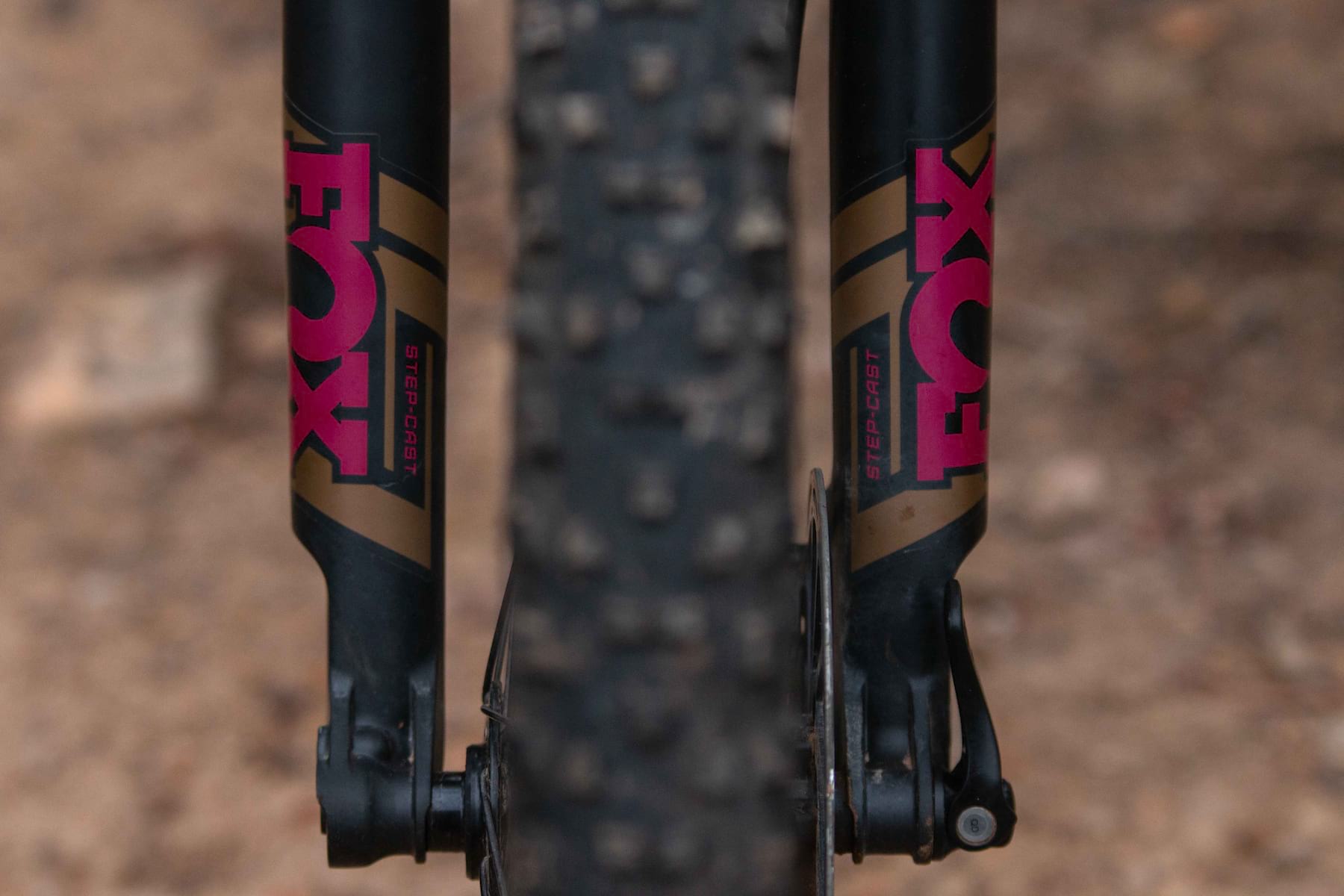
Three Things I Loved
- The delectably addictive high-speed poise
- Fox’s 34 Step-cast fork is a lightweight slider, but it possesses great ground-tracking performance
- The BikeYoke dropper – it has a silky action, a low stack height, and a fantastic remote
Overall
As far as riding good times are concerned, the Whyte S-120 is an absolute yahoo-factory. It’s also an impressive example of just how capable progressive geometry can make a trail bike. Sure, it may only have 120mm of travel, but the robust and sure-footed chassis takes it well beyond traditional limitations. It’s a rapaciously rapid bike.
The stock wheels are a definite low point in the otherwise solid parts package. You’re still getting a solid frame and high performance suspension though, which combined with the boundary-pushing geometry, leads to ludicrous fun on the descents.
If you’re after a short-travel bike to push your limits, this one’s a cracker.
2019 Whyte S-120 C RS Specs
- Frame // Monocoque Carbon Fibre Mainframe & Alloy Rear, 120mm Travel
- Fork // Fox 34 Float Rhythm, Performance Series, GRIP Damper, 44mm Offset, 120mm Travel
- Shock // Fox Float DPS, Performance Series, 210x50mm
- Hubs // Whyte Alloy, Double Sealed Bearing, 110x15mm Front & 148x12mm Rear
- Rims // Race Face AR-27 Offset, 27mm Internal Width, Tubeless Ready, 32h
- Tyres // Maxxis EXO 60tpi Forekaster 2.35in Front & Crossmark II 2.25in Rear
- Crankset // SRAM Stylo 7K, 34t X-Sync 2 Chainring
- Rear Mech // SRAM GX Eagle, 12-Speed
- Shifters // SRAM GX Eagle, 12-Speed
- Cassette // SRAM GX Eagle, 10-50t, 12-Speed
- Brakes // SRAM Guide RS, 180mm Front & 160mm Rear Rotors
- Stem // Whyte Gravity, 40mm Length
- Bars // Whyte 6061 Alloy, 15mm Rise, 780mm Wide
- Grips // Whyte Lock-On
- Seatpost // Bike Yoke Revive, 160mm Travel
- Saddle // Whyte
- Size Tested // Medium
- Sizes Available // Small, Medium, Large, X-Large
- Confirmed Weight // 13.35kg / 29.37 lbs
- RRP // £3,499 / $6,500 AUD

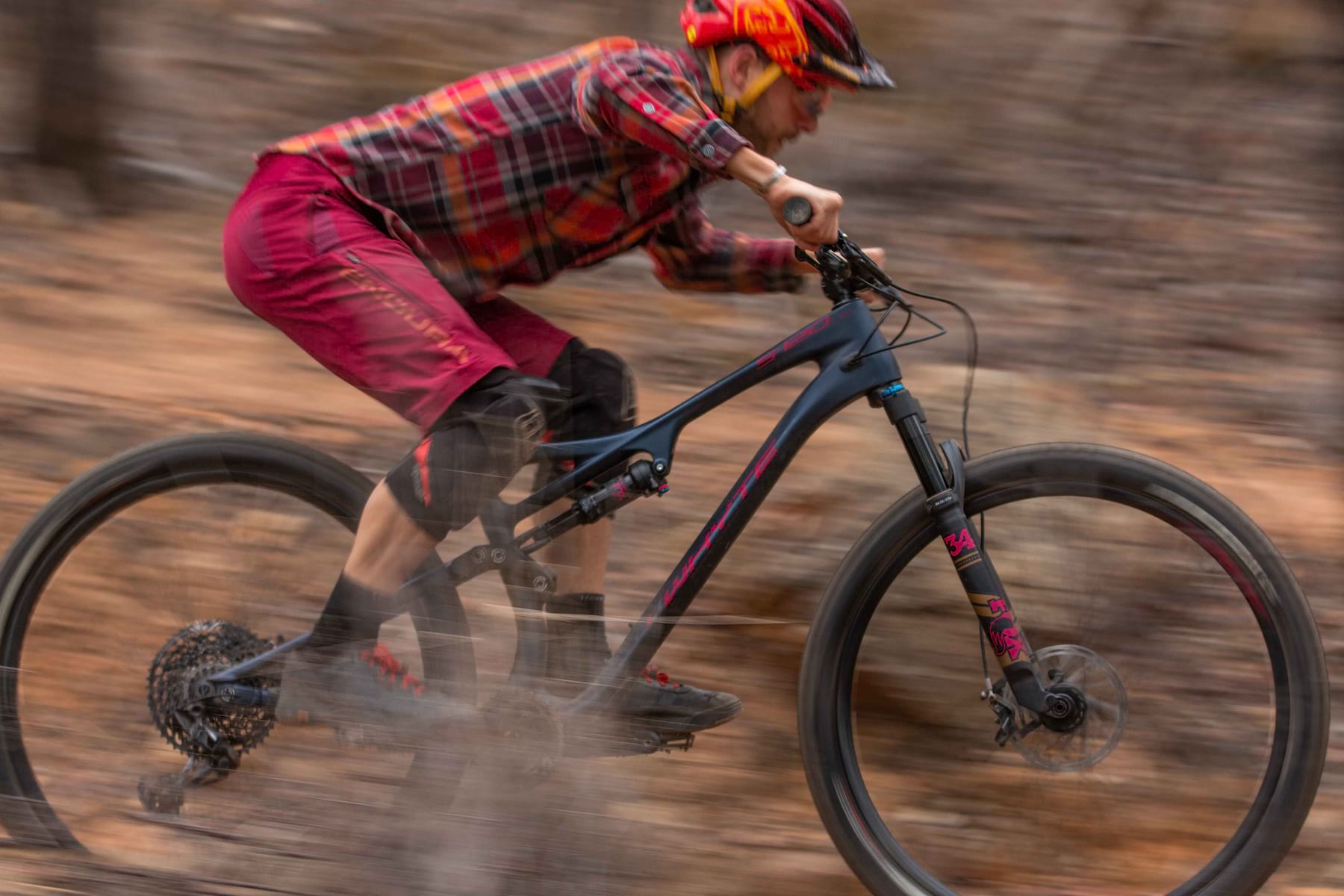




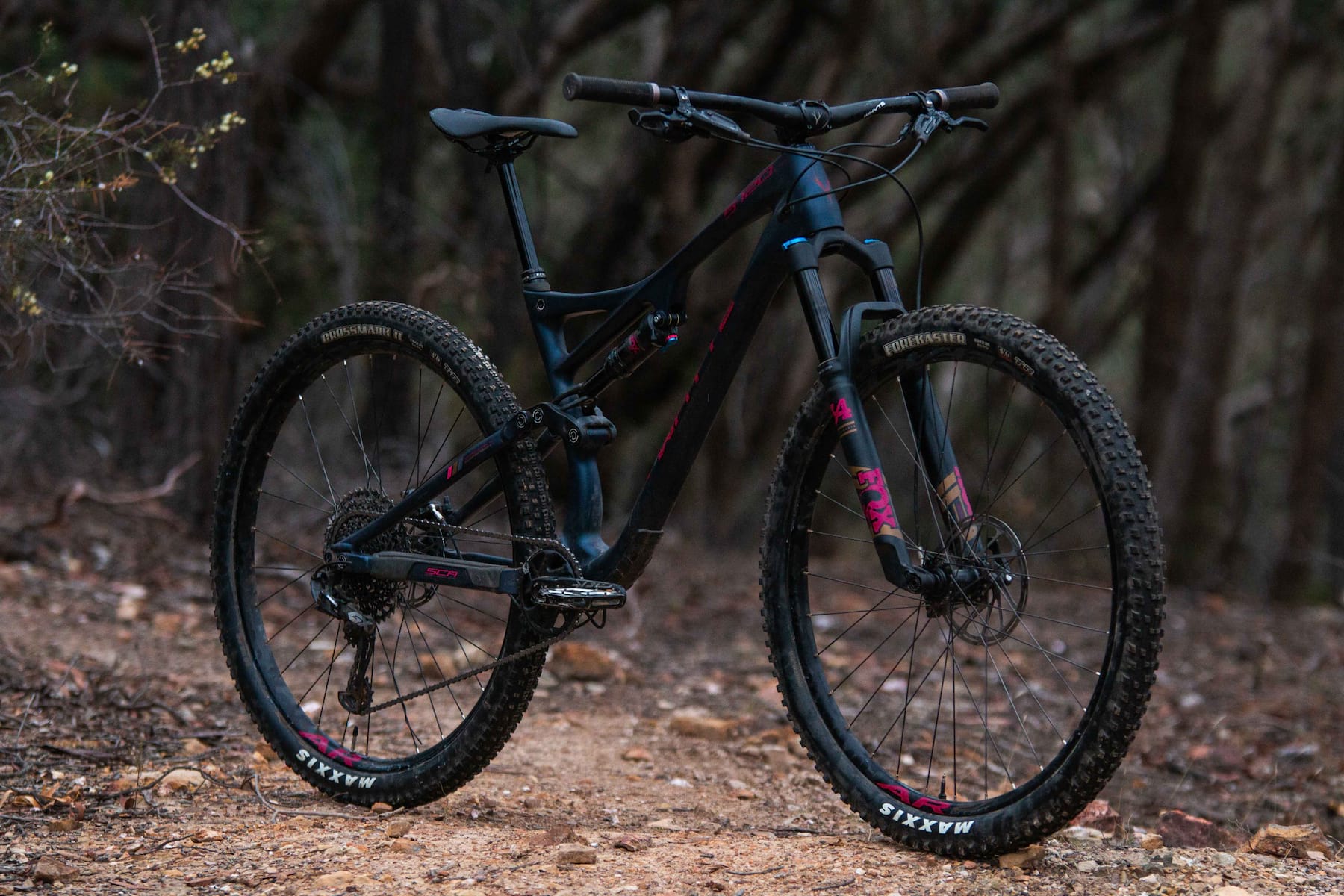
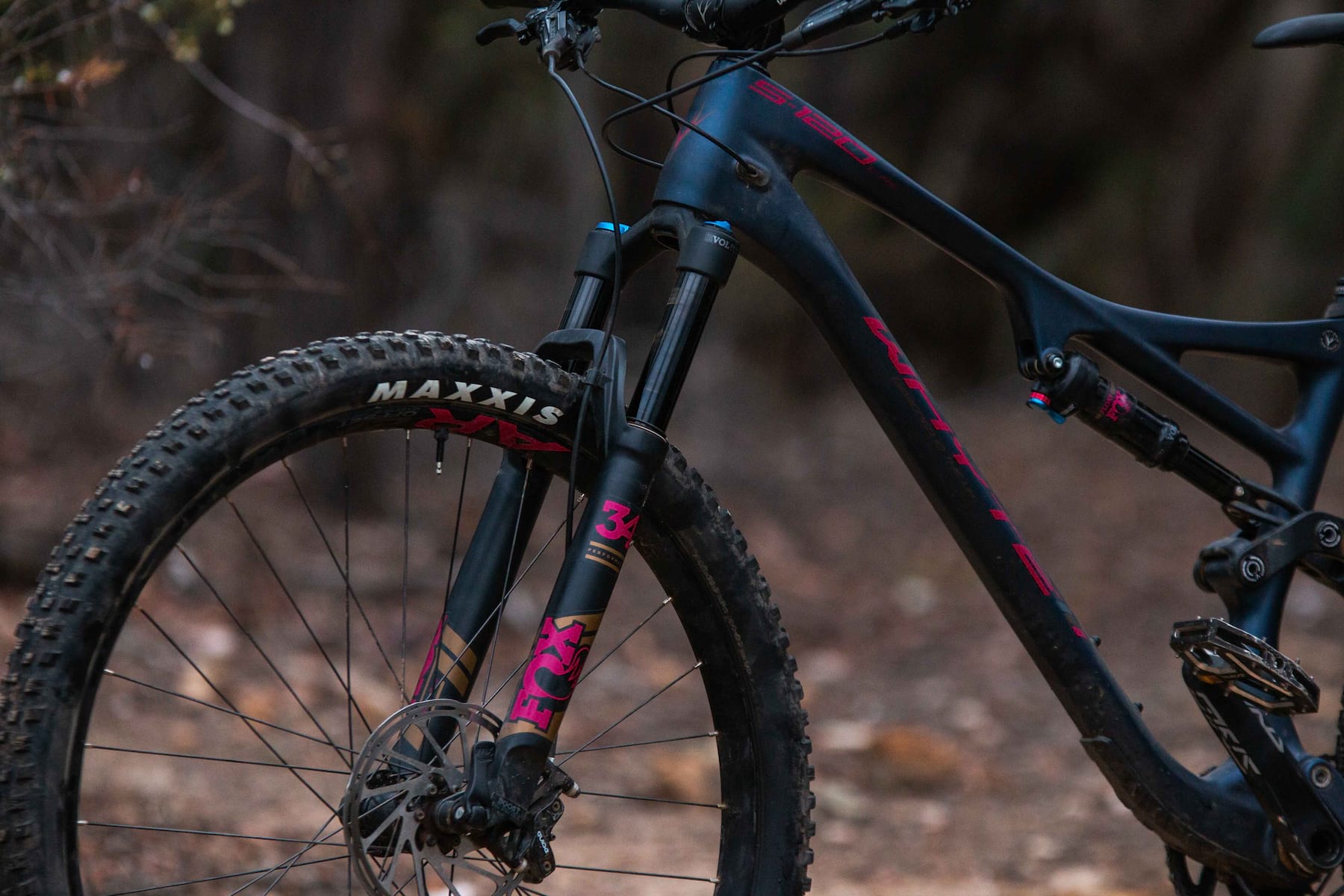
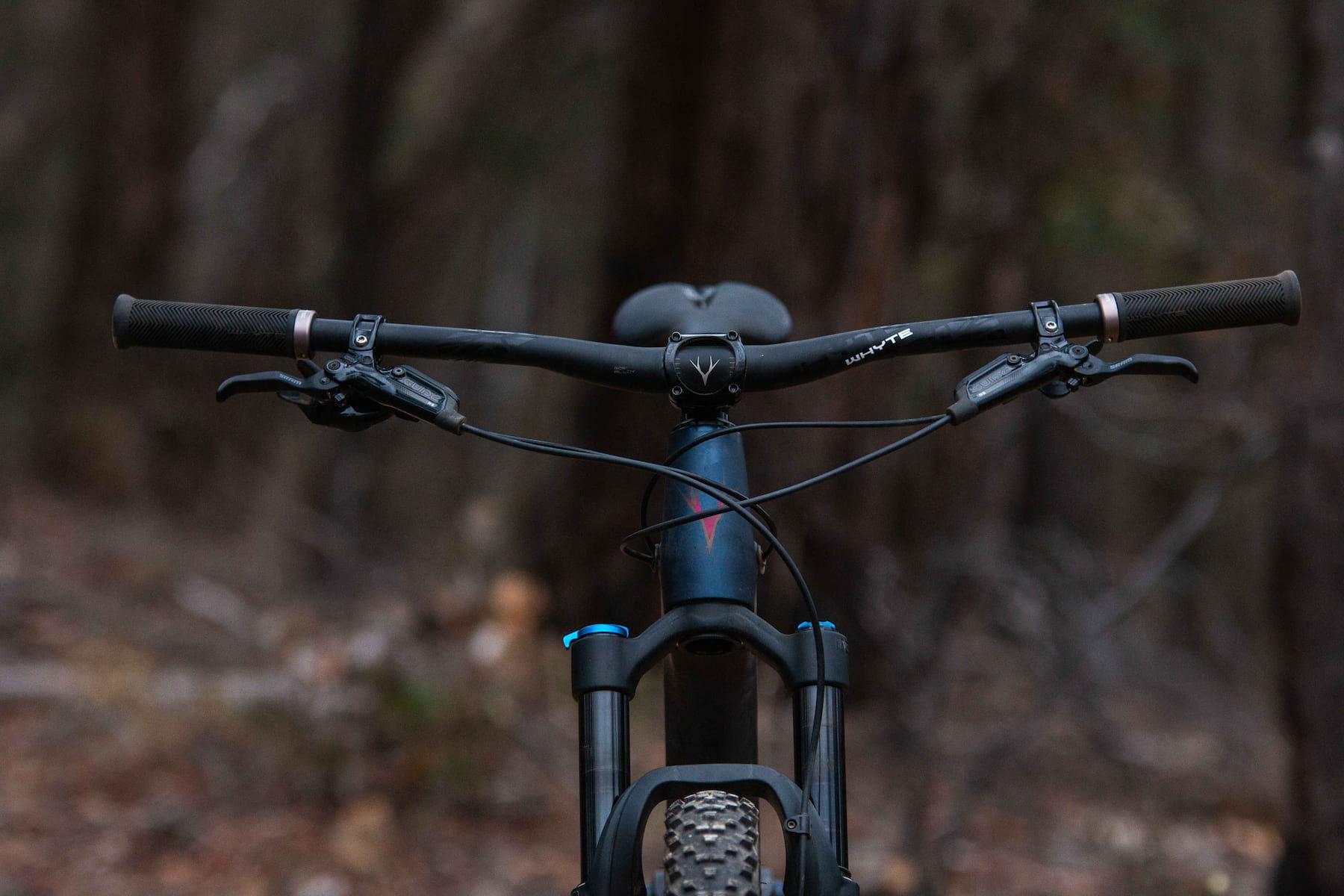
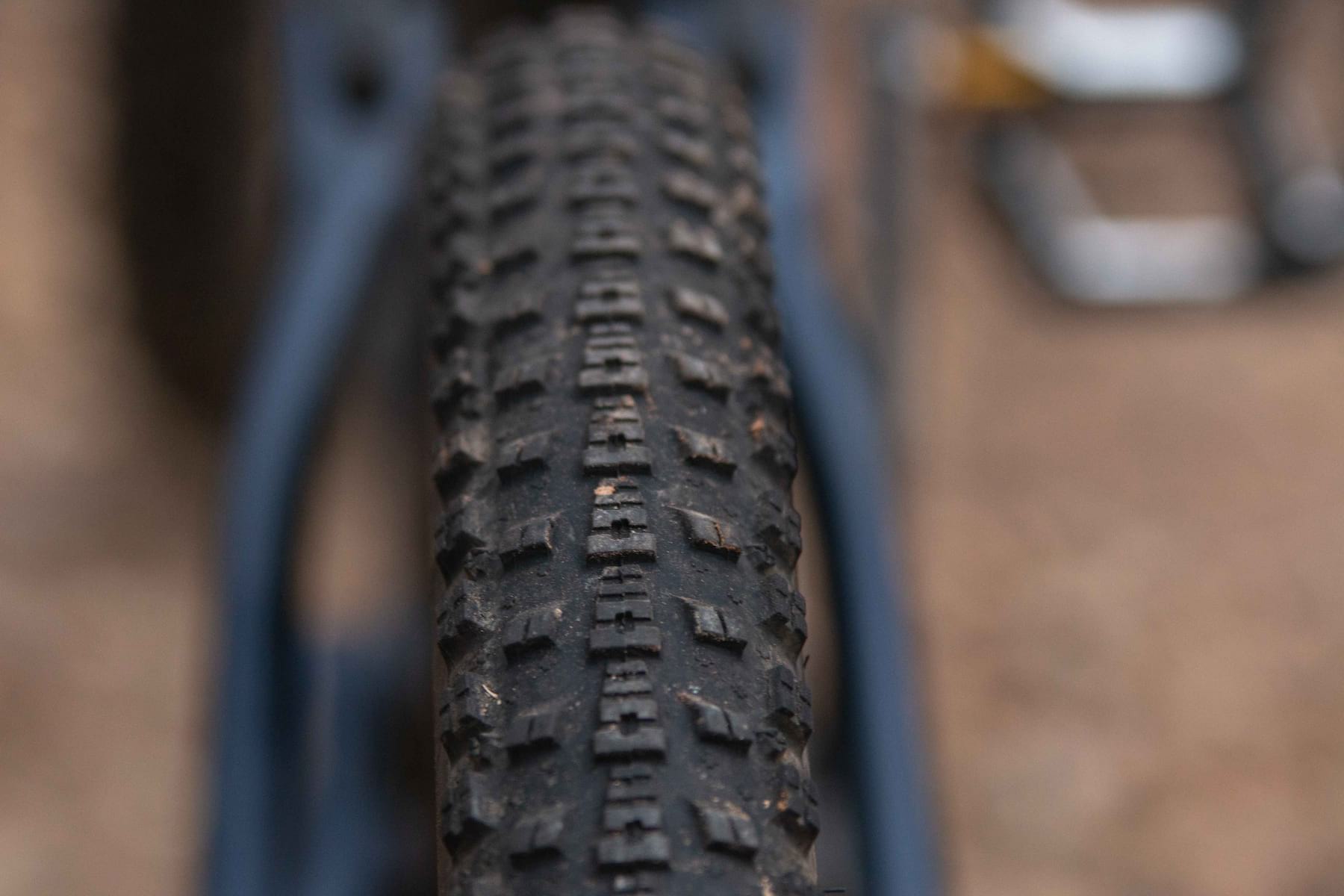
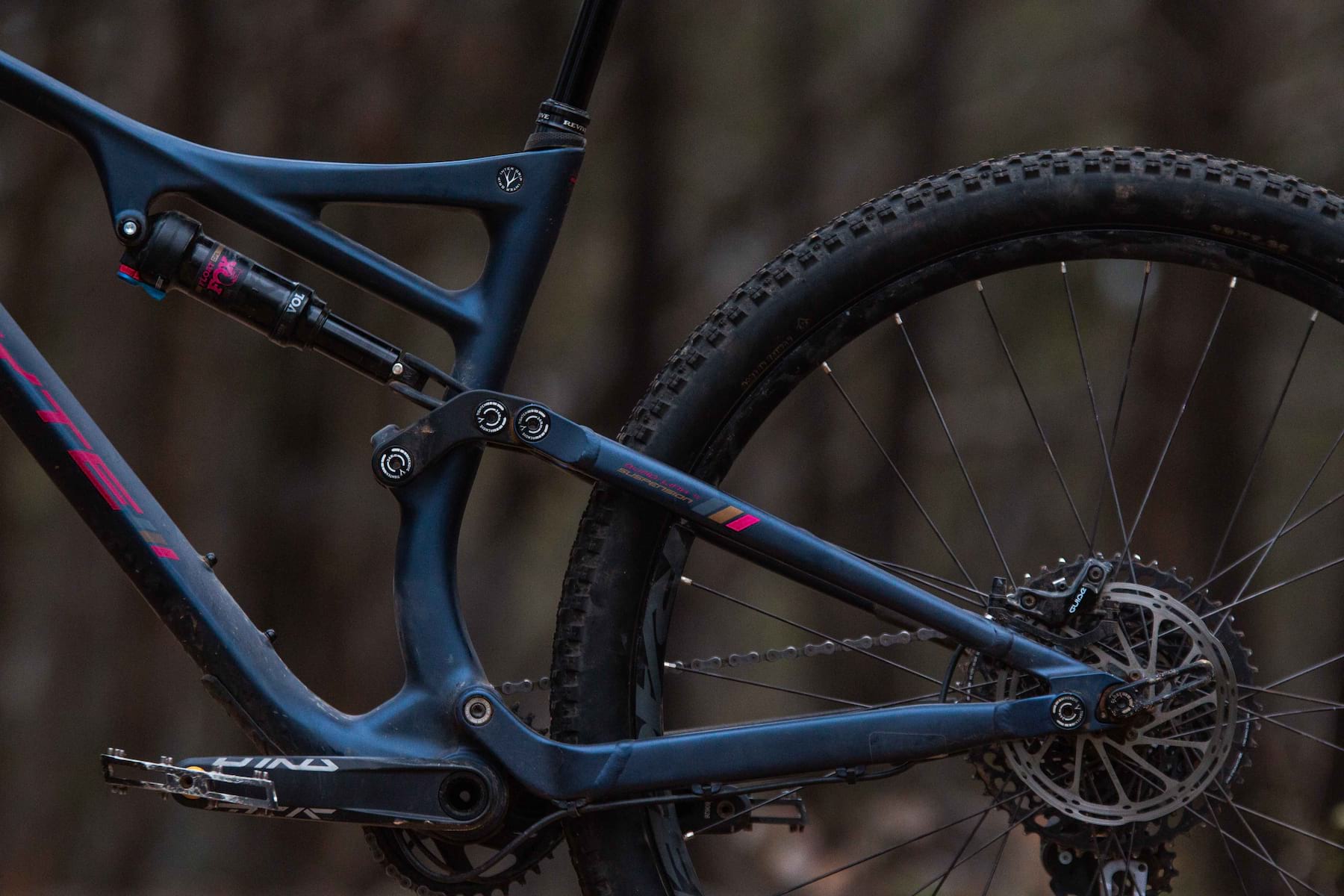
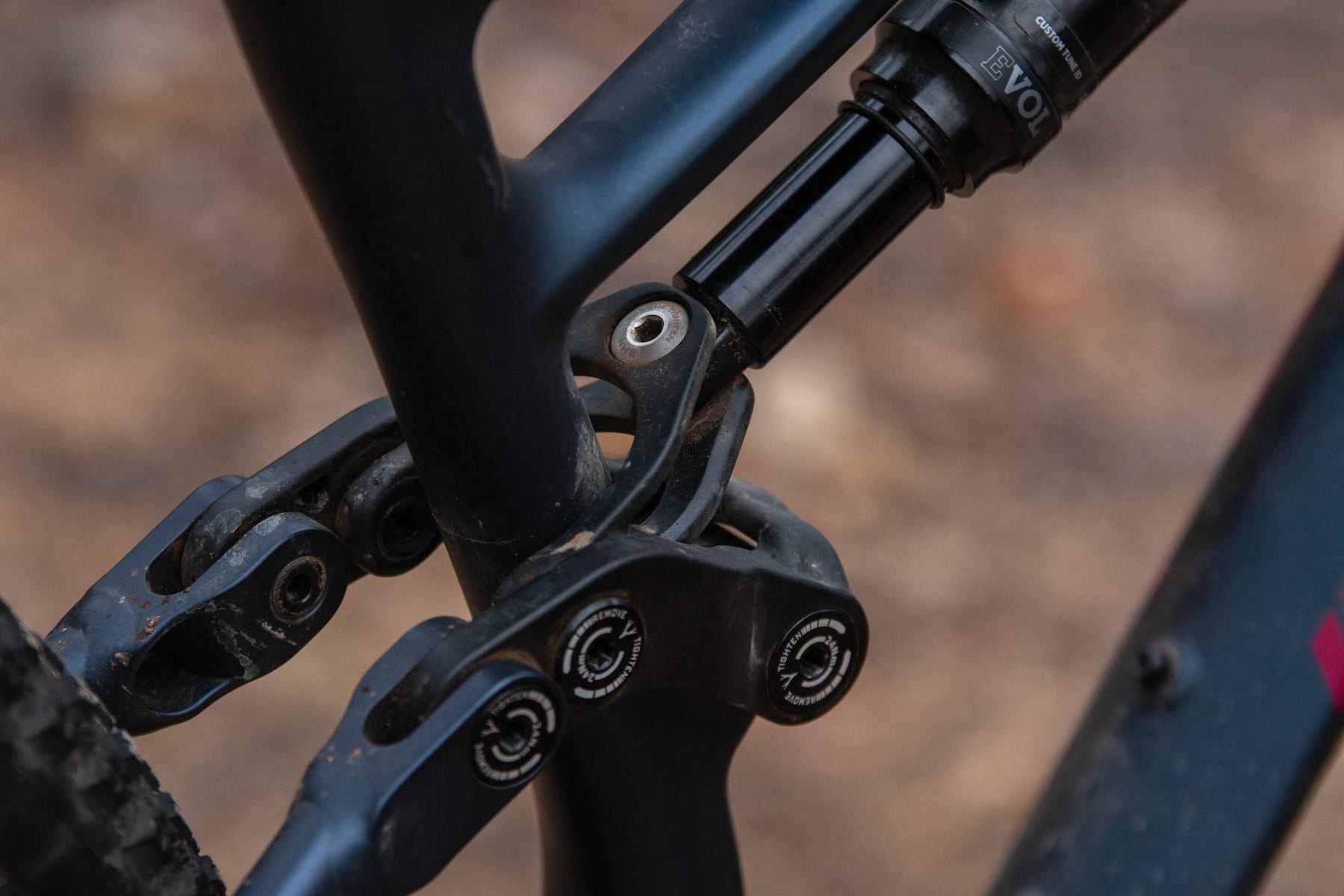
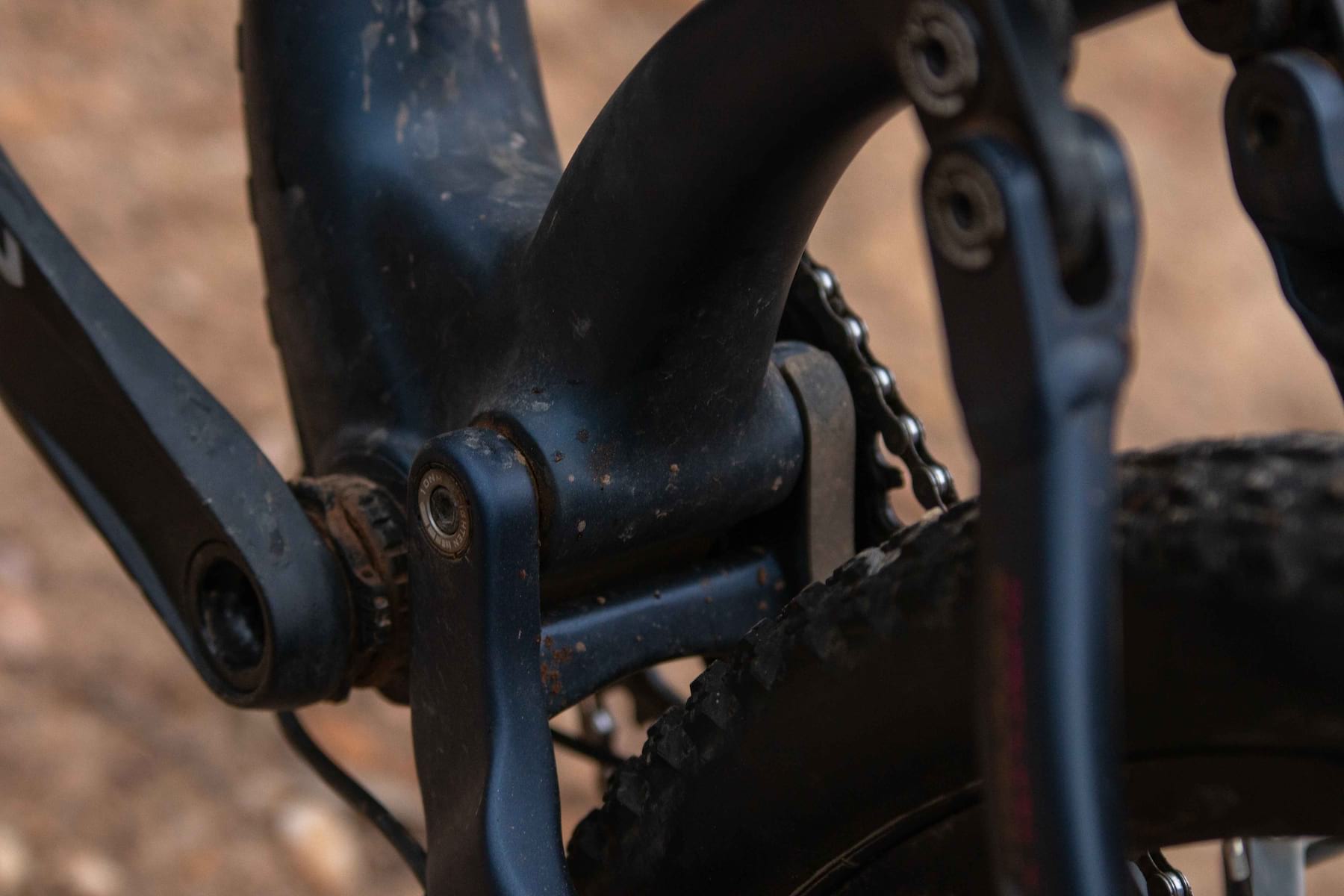
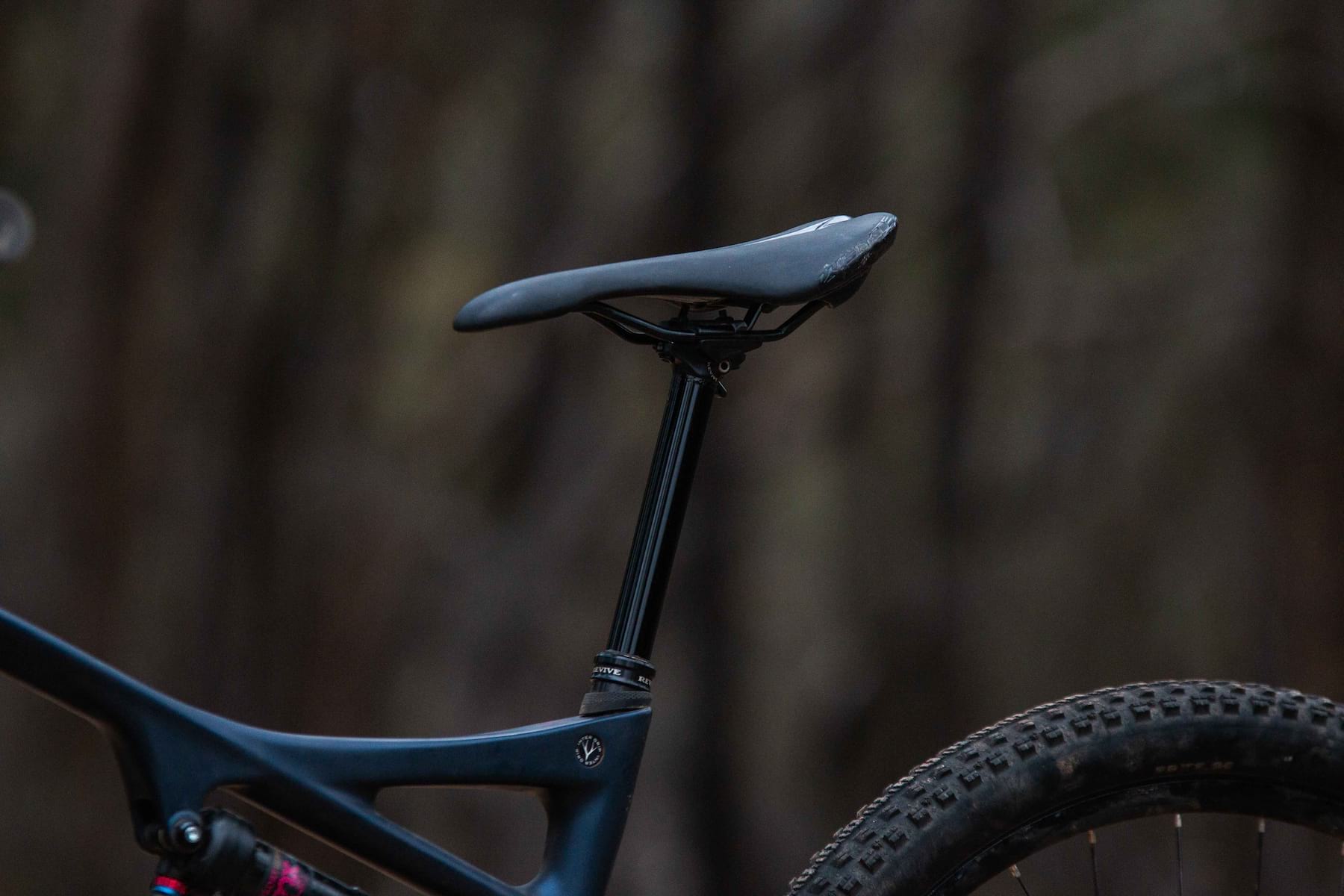
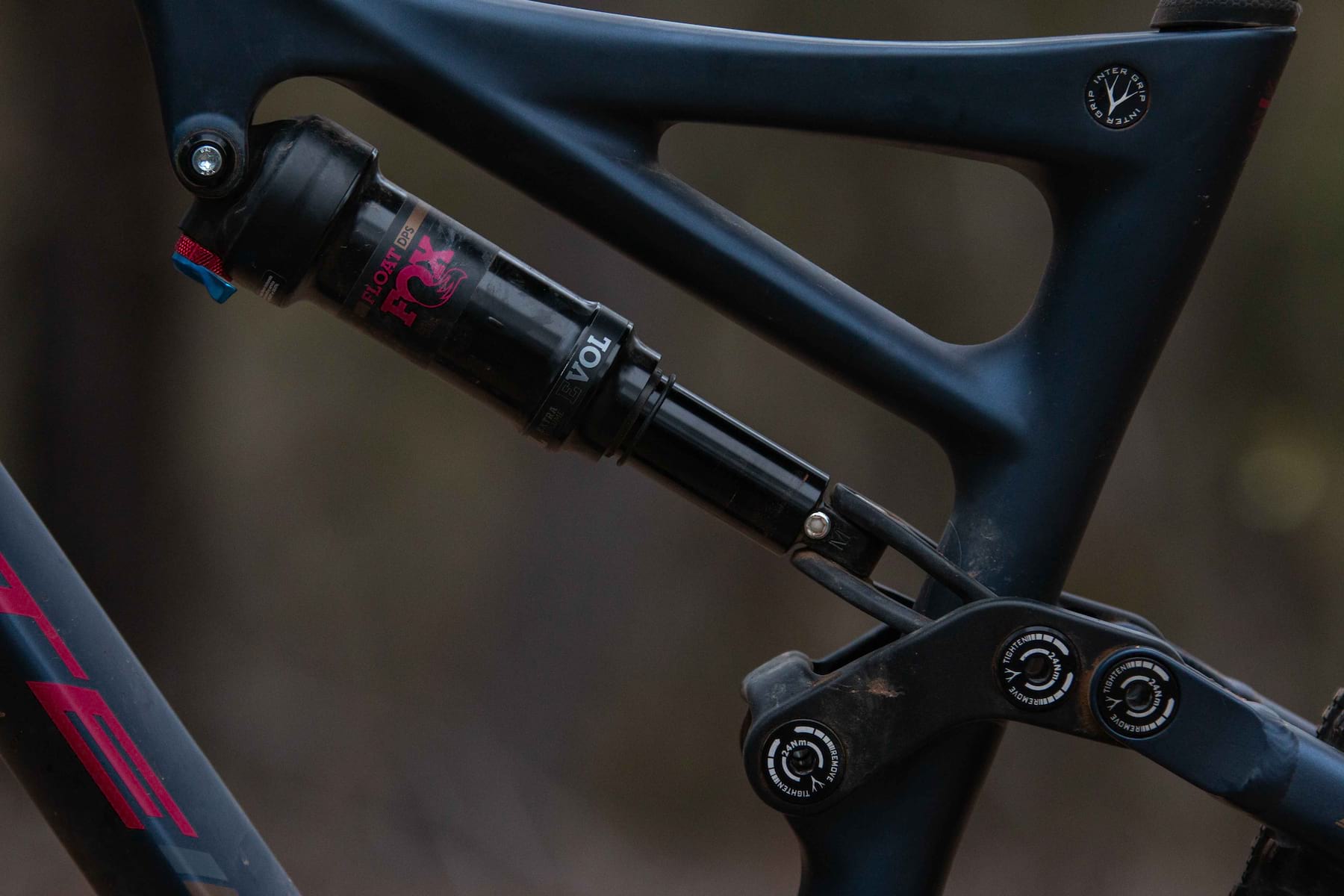
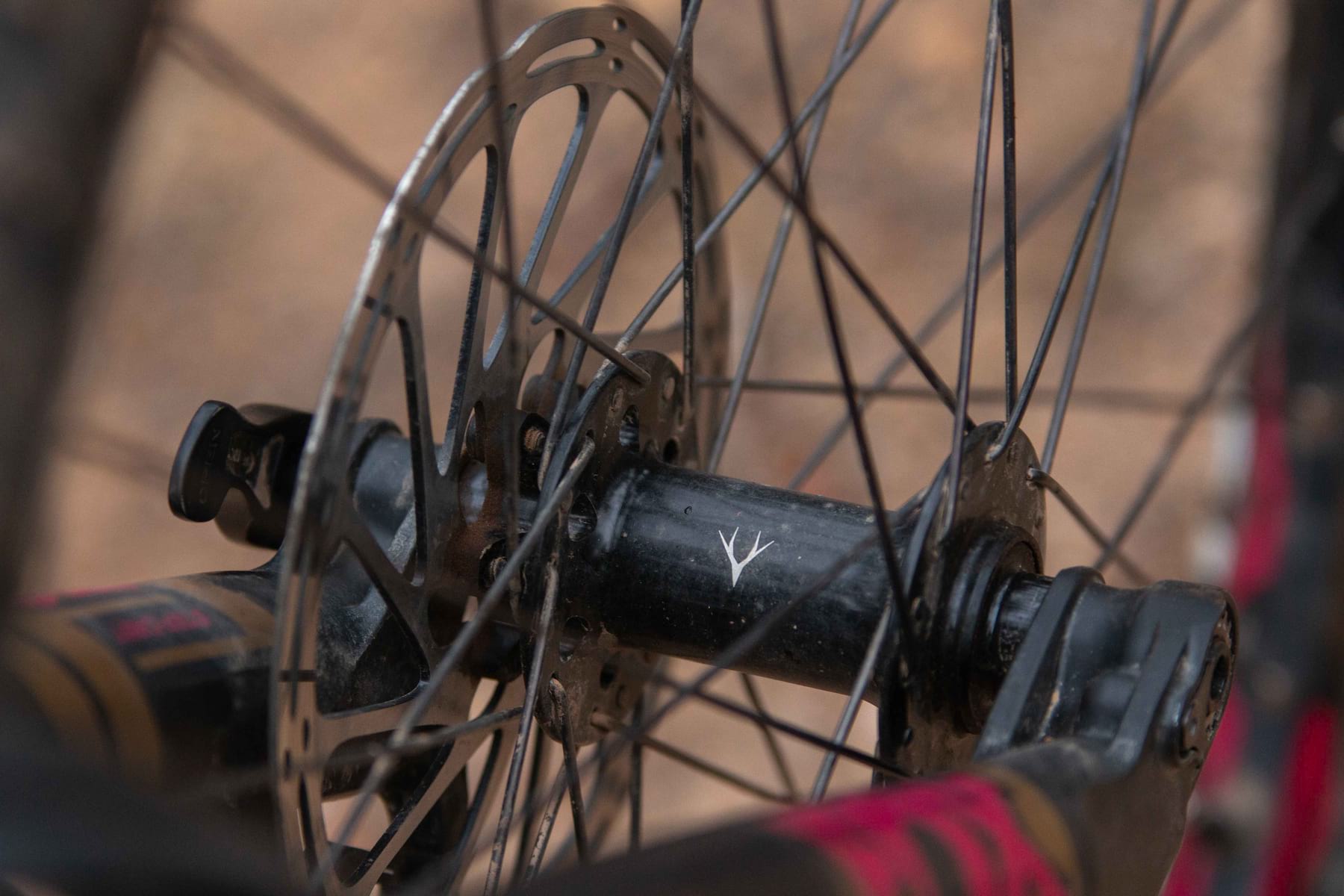
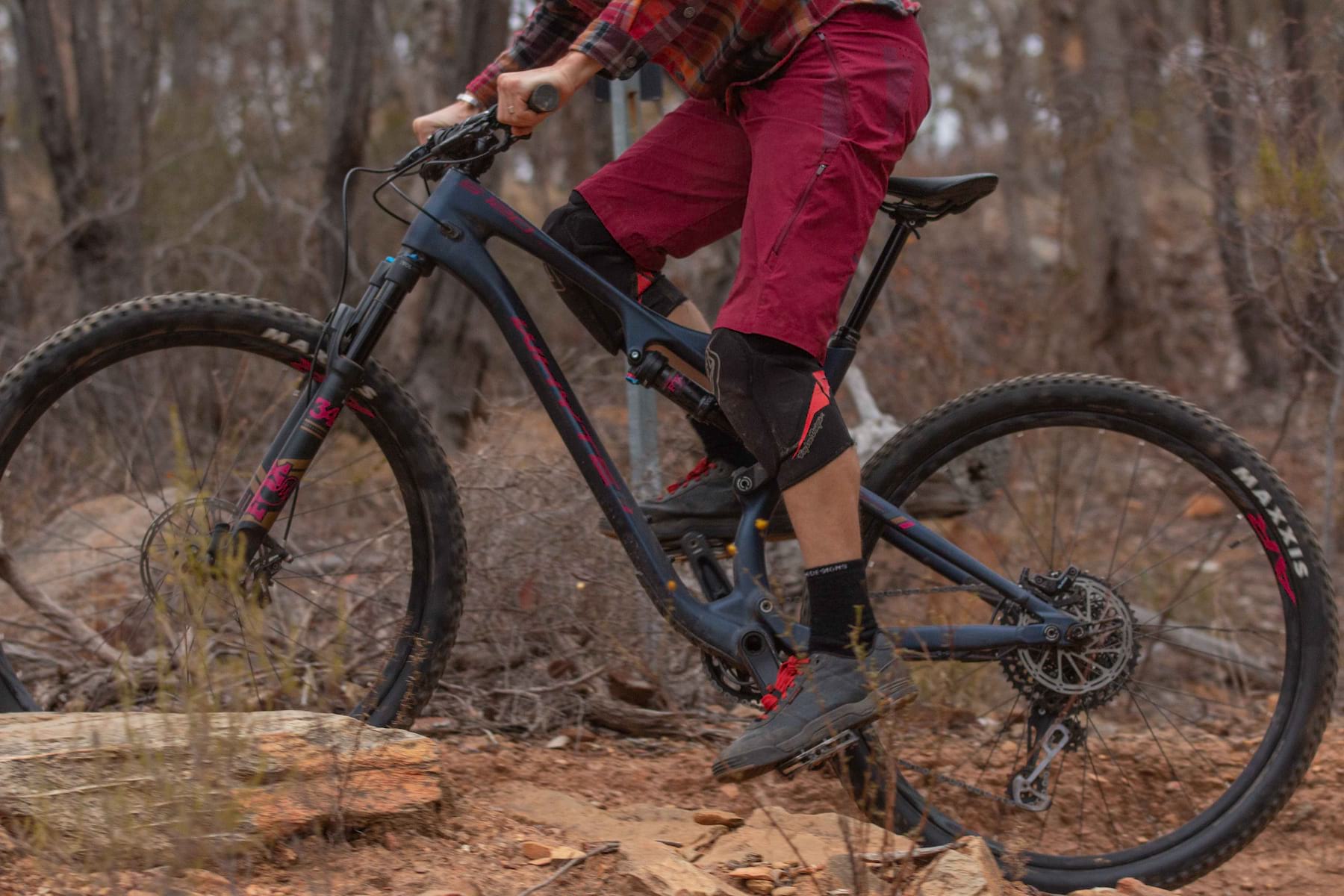
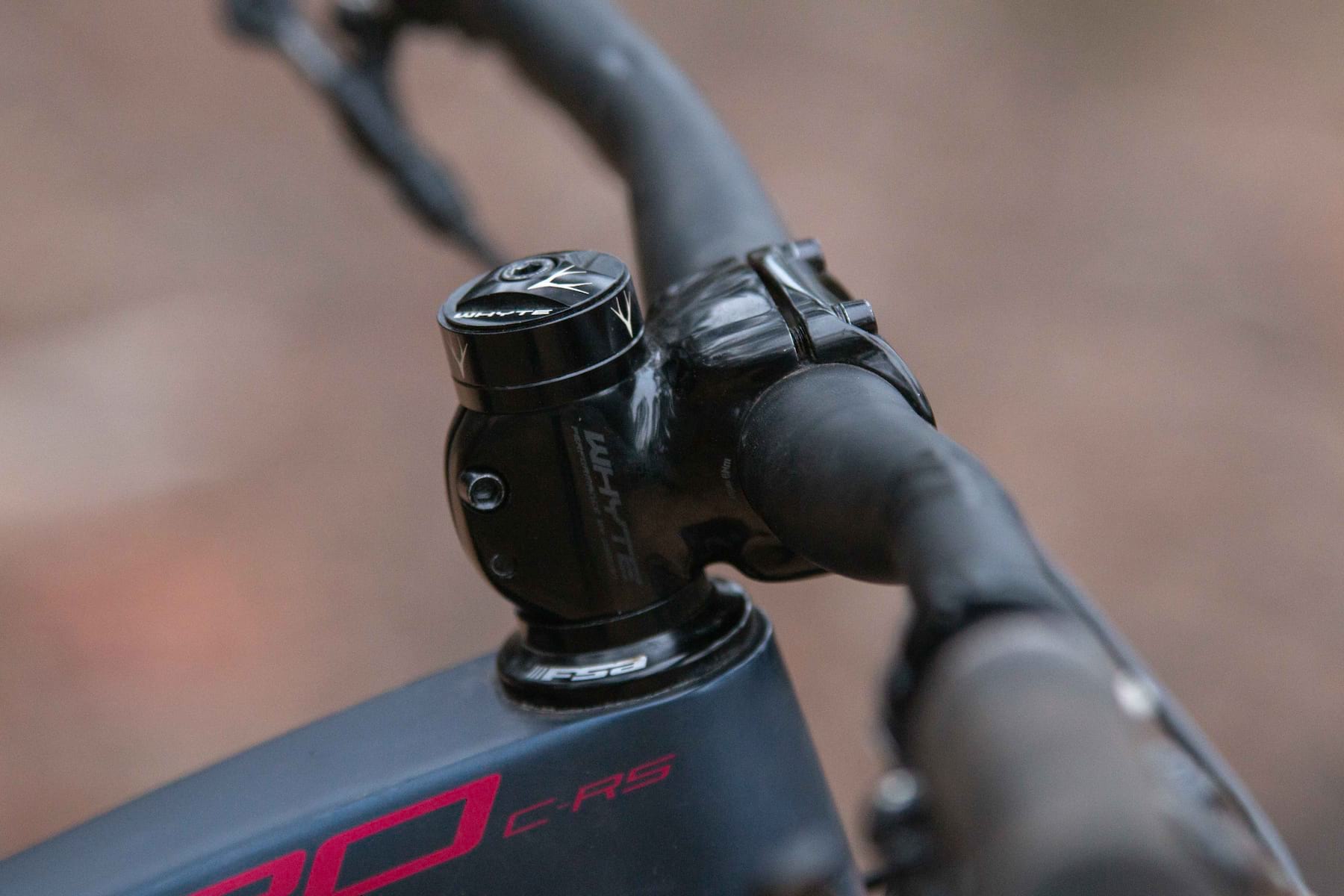
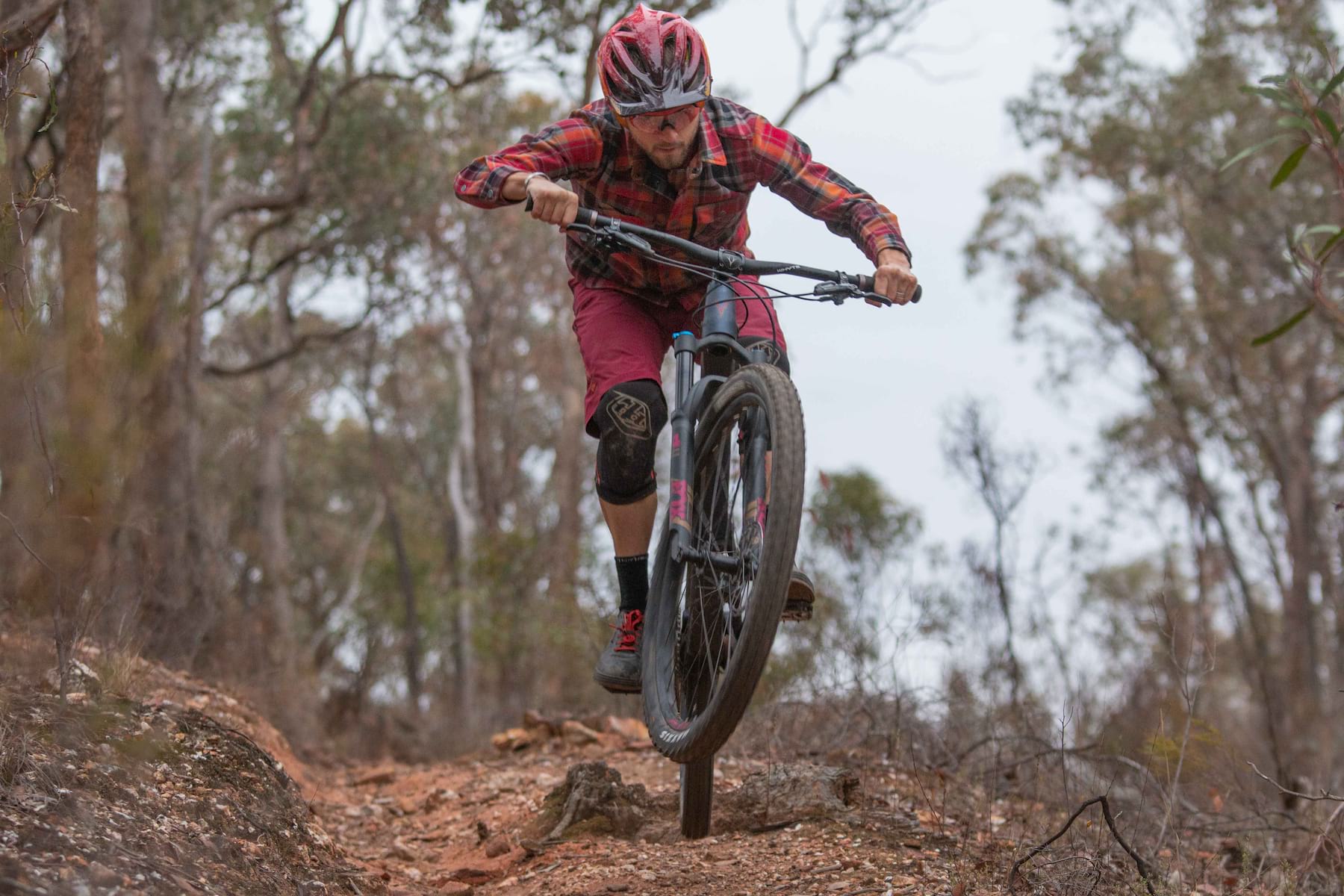

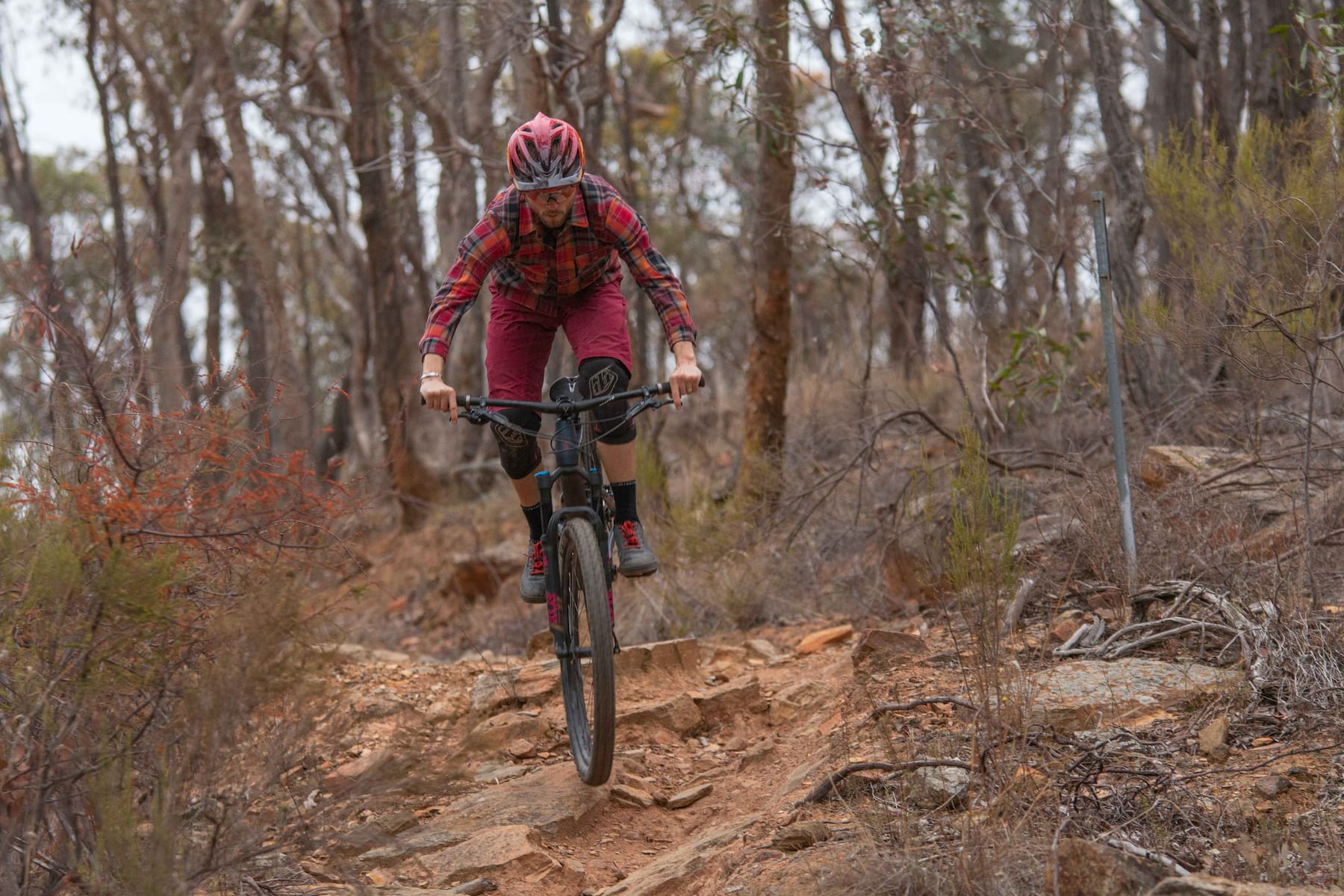
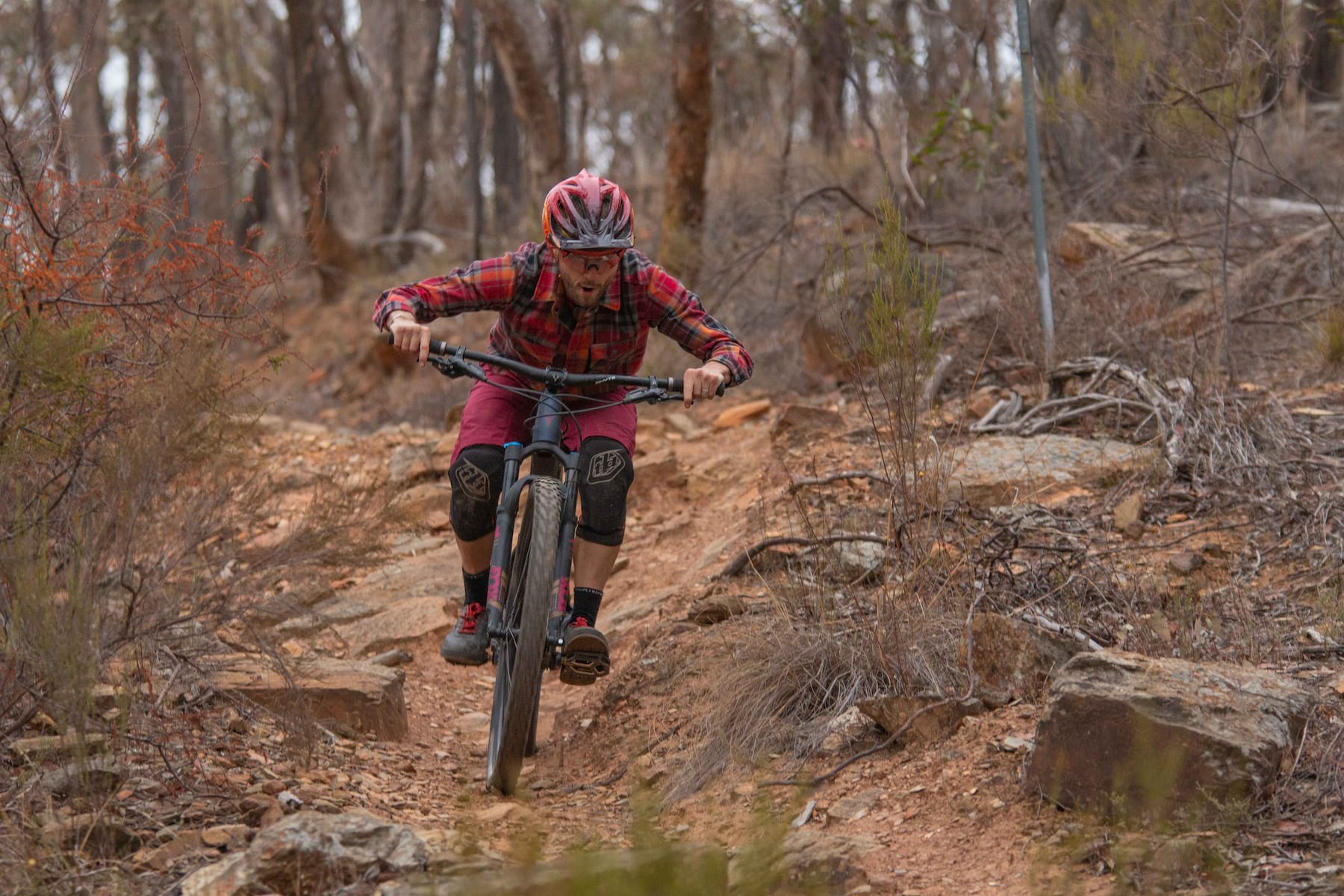
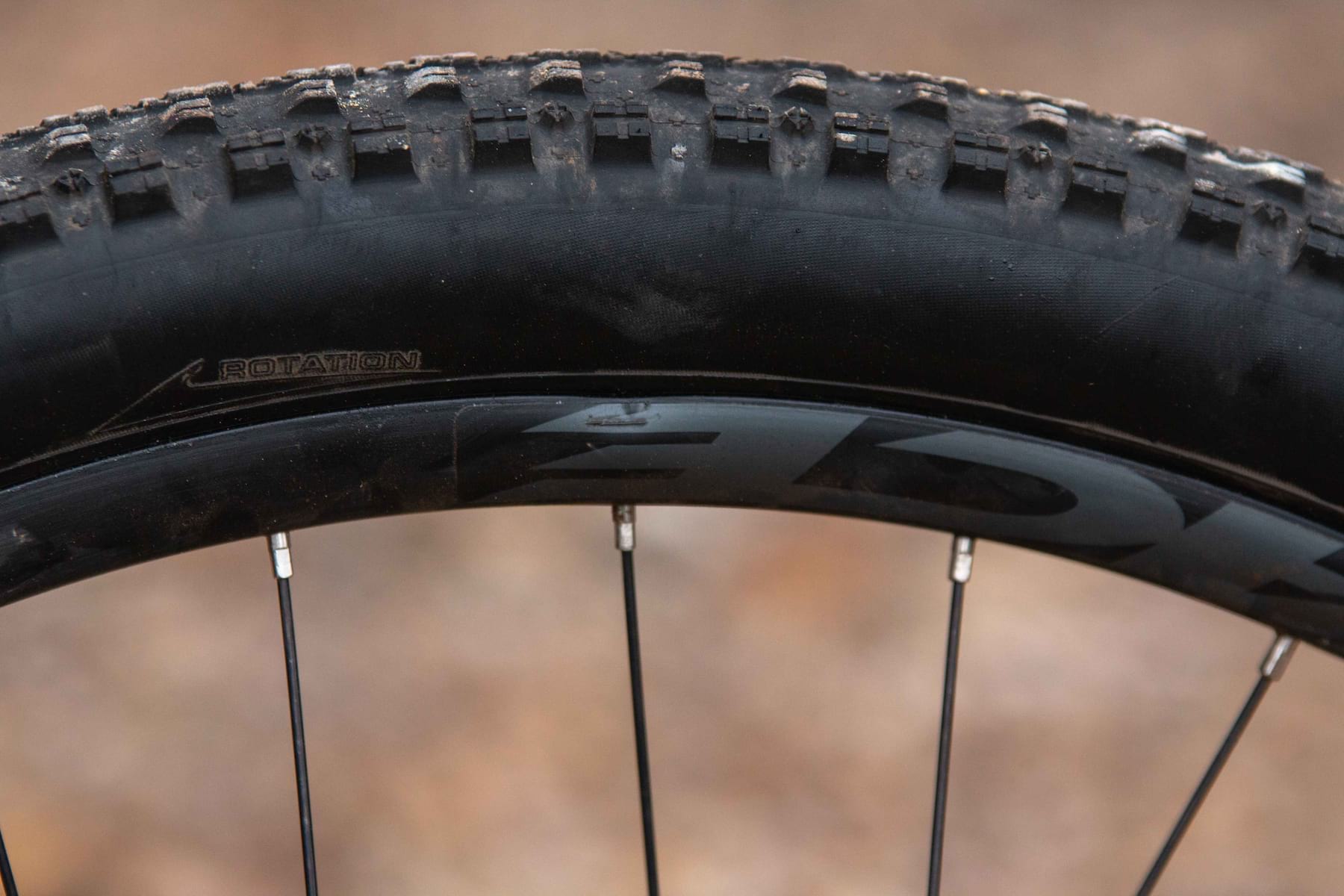
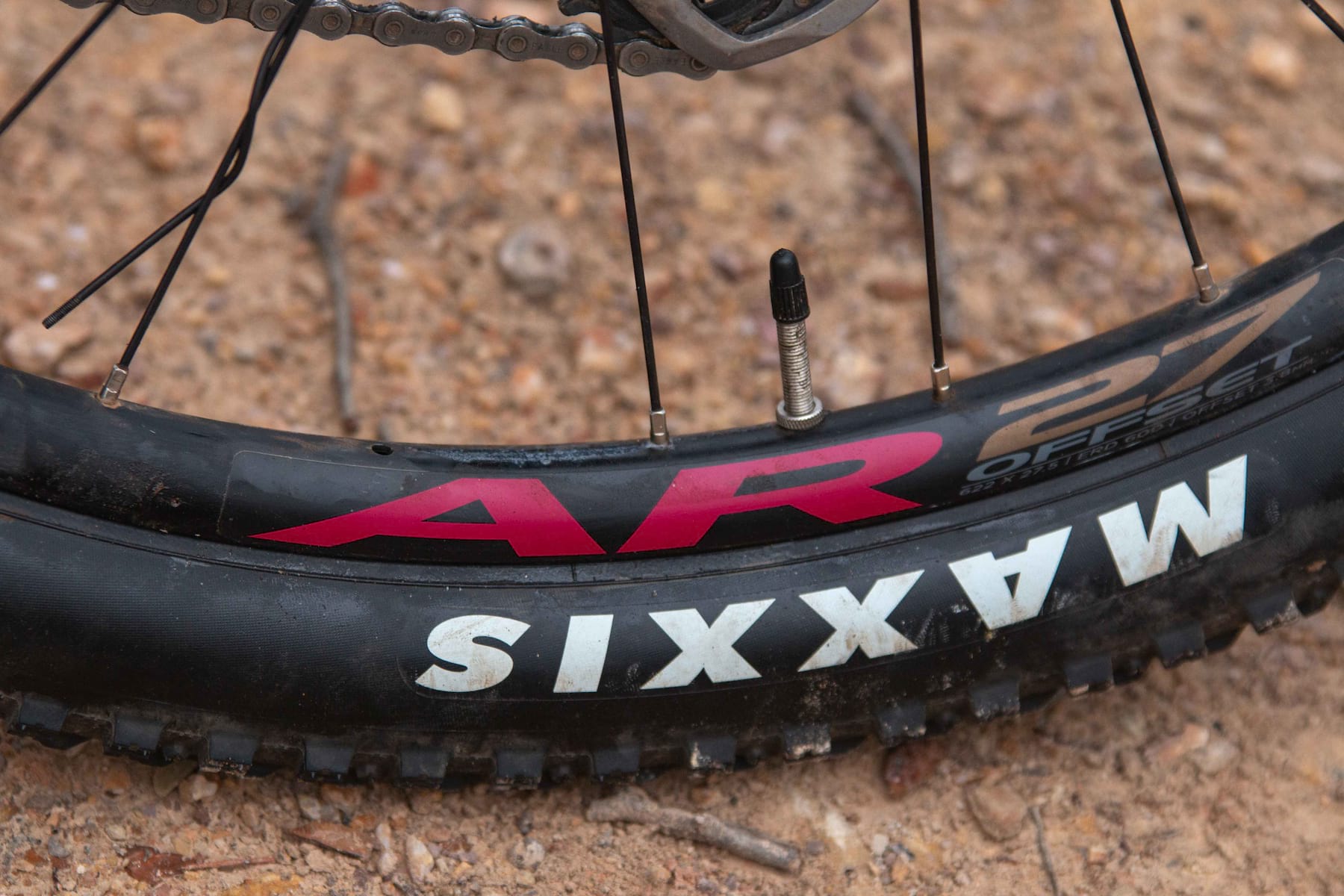
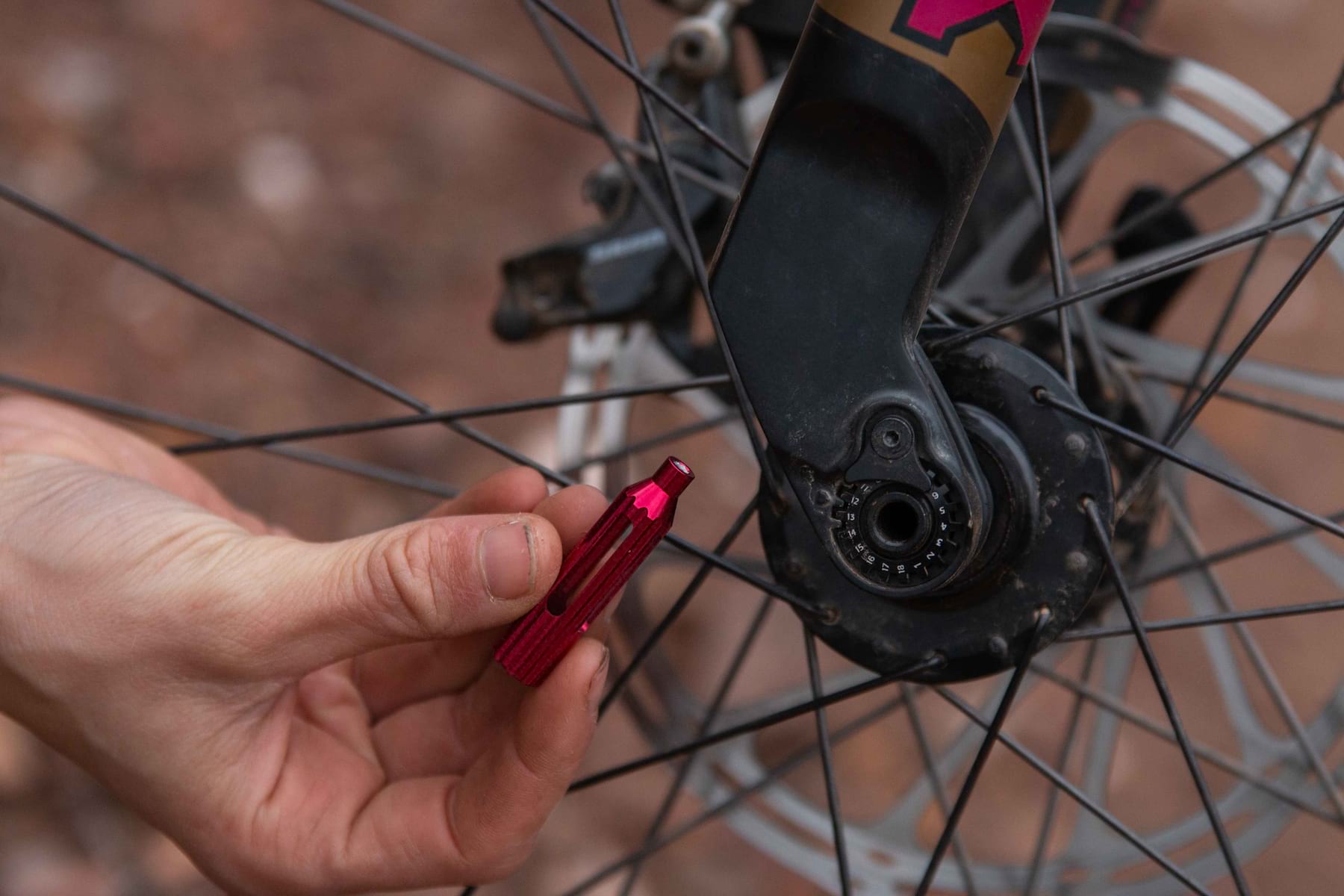
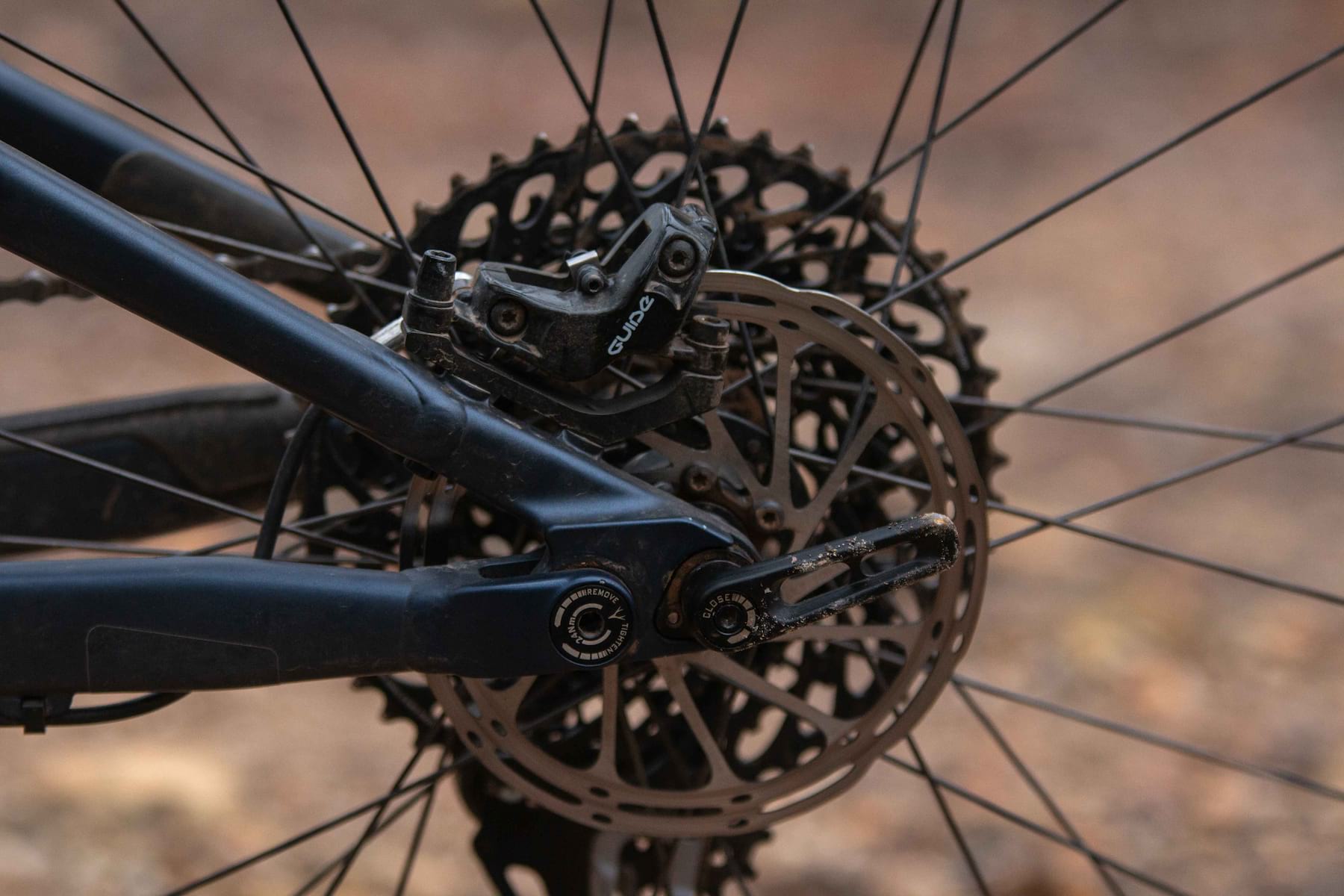

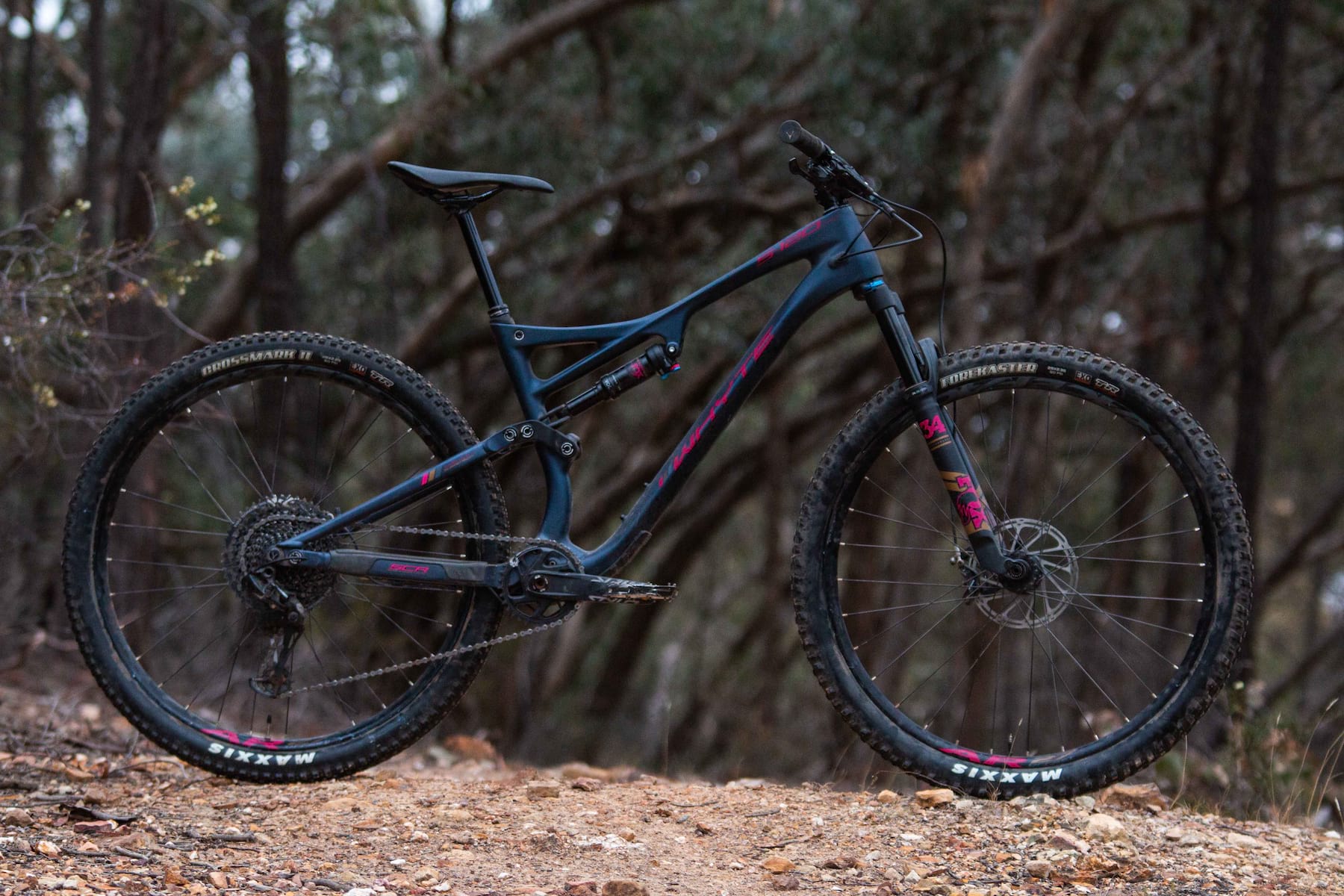
Looks great but how nd why have they made it to heavy